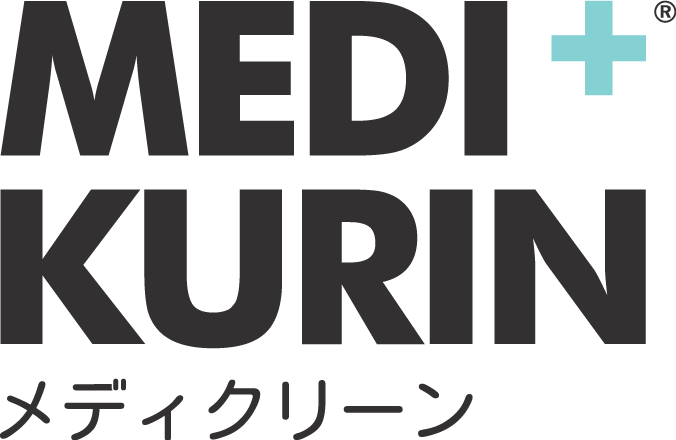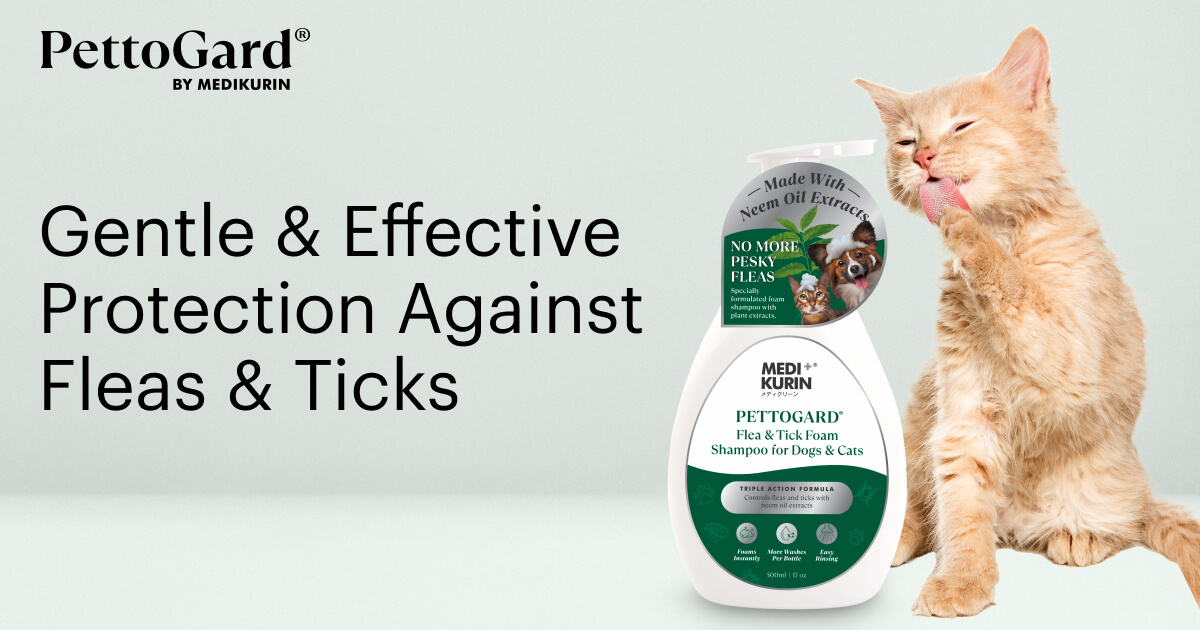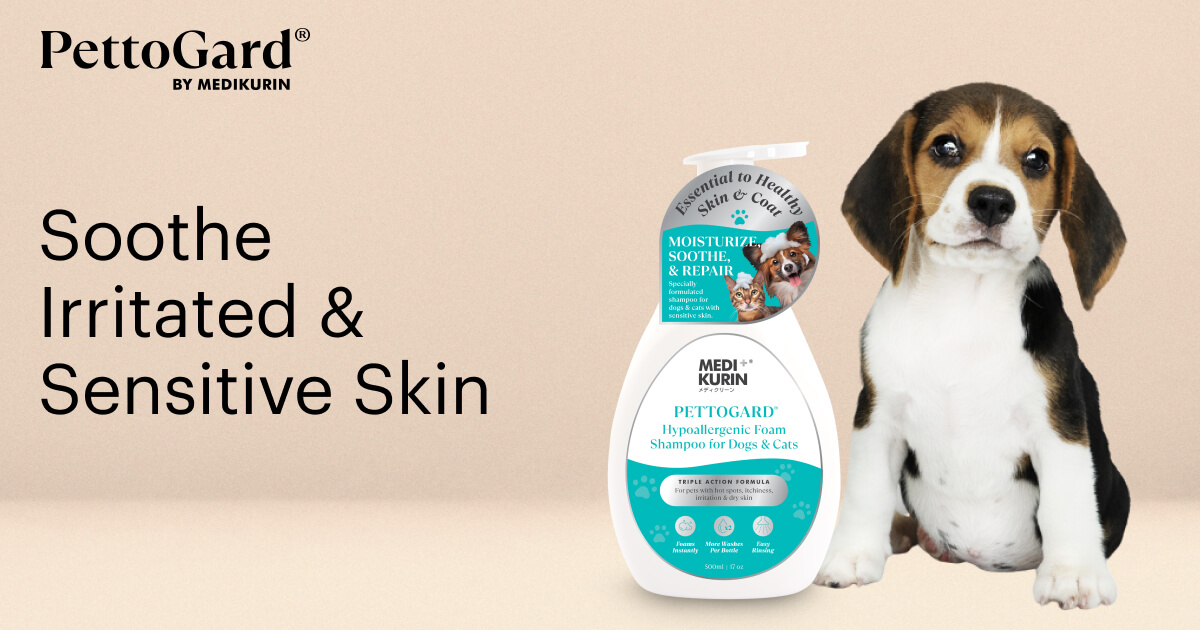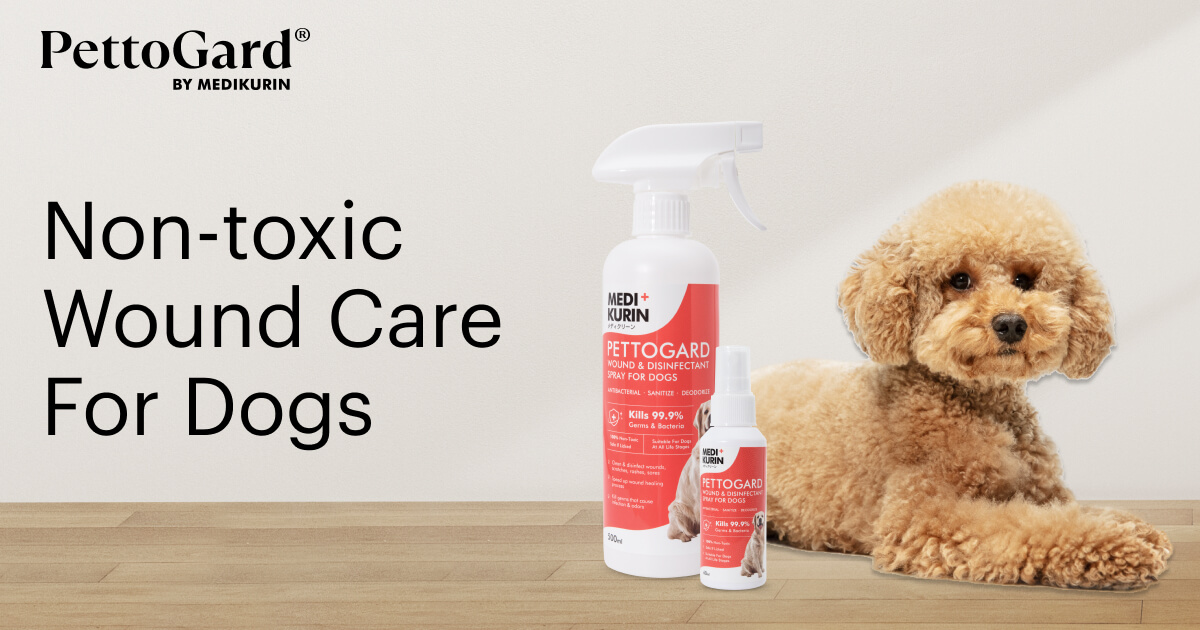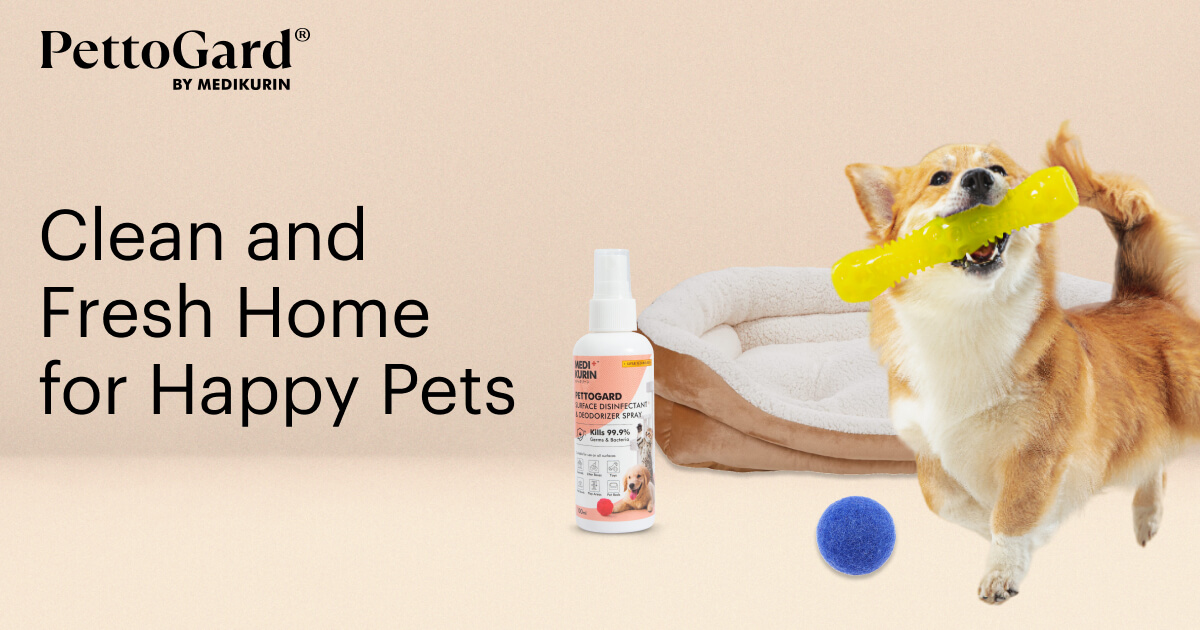Here’s Your Ultimate Guide to Pet Skincare; The Risks, Vulnerable Areas, and Treatment Options.
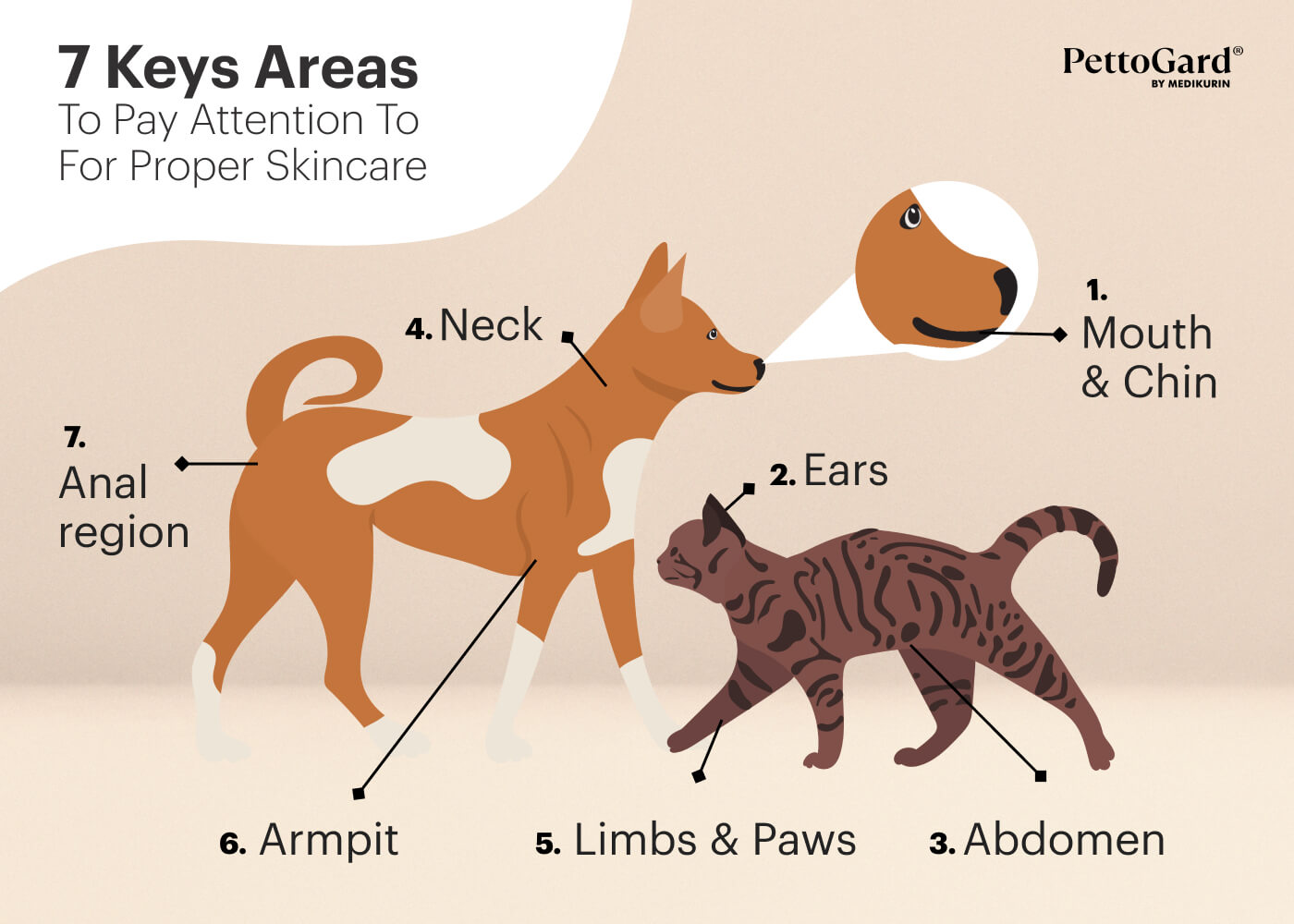
Yup, just like humans, your pets also need a healthy skincare routine. In fact, your pets’ skincare routine is about as important as their diet and nutrition intake when it comes to maintaining their overall health and happiness, along with preventive veterinary care, health monitoring, and grooming.
Initially, the topic of pet skincare may seem complex, especially to first-time pet owners. Thus, we’ve put this article together for you to streamline the information so that you only need to pay extra attention to the 7 key areas on your beloved furry friend’s body that are more prone to irritation, infection, and allergies. These areas include the mouth and chin, ears, abdomen, neck, limbs and paws, armpits, and anal region.
1. Mouth and Chin
Did you know that acne affects not just humans, but cats and dogs too? Cat acne is a common problem that is usually seen near the mouth and chin area. It could stem from allergies to flea or tick bites, plant pollen or fungal spores, and bacterial infections. Just like how we take care of our facial hygiene by regularly washing our faces and wiping our mouths after meals, pet owners are advised to take preventative measures such as using a warm washcloth to gently wipe your pet’s mouth and chin area regularly. This helps in maintaining general cleanliness to prevent and treat pet acne.
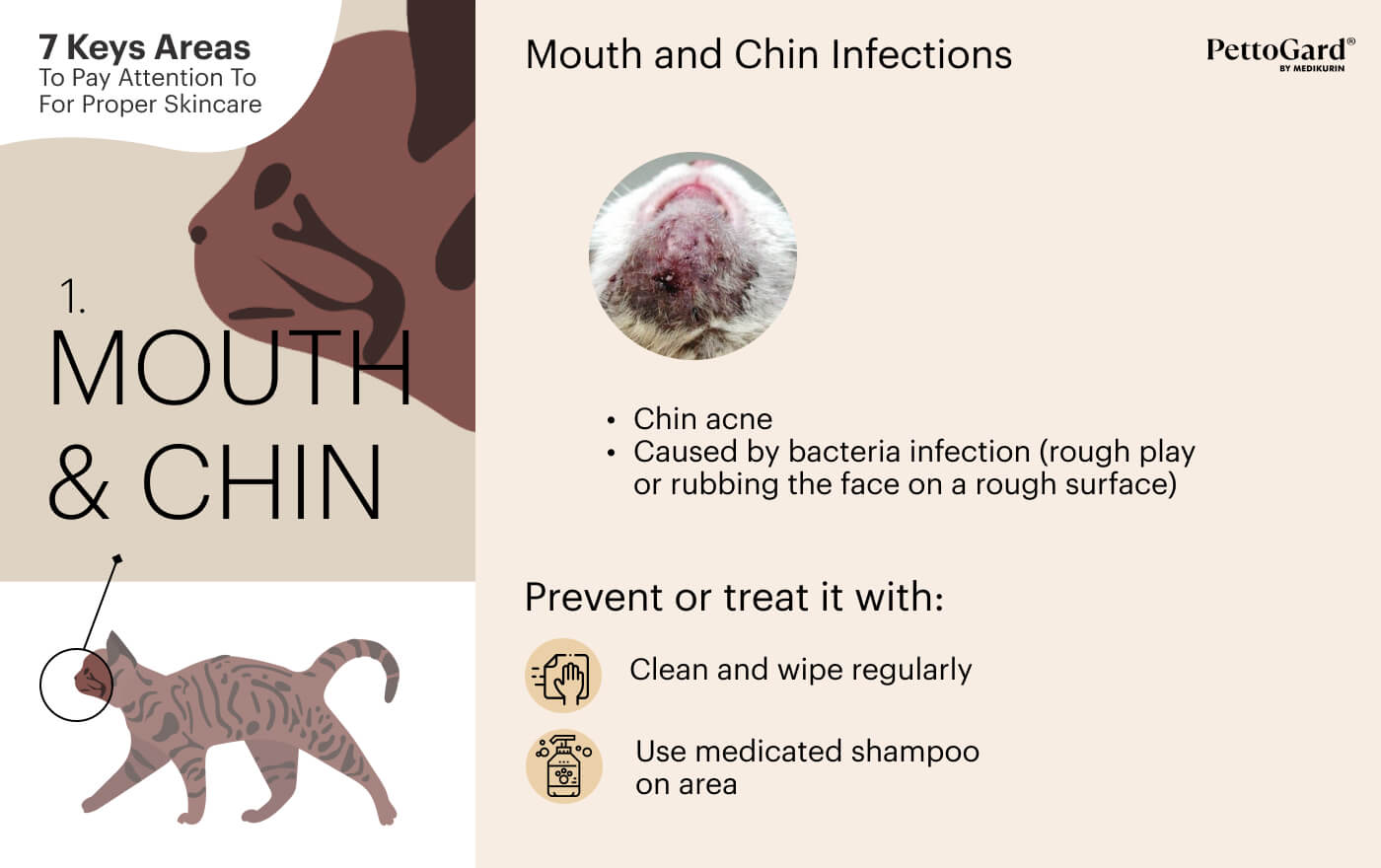
2. Ears
Ear infections are one of the most common skin problems faced by furry pets, especially dogs and cats. For starters, pet owners must understand that the structure of your pets’ ear canals makes them more prone to infection. Left untreated, ear infections that become more severe can cause extreme discomfort to your beloved fur baby! Some of the common causes of ear infections in pets include ear mites, environmental allergies, fungal infections (such as Aspergillus), and bacterial or yeast infections. Thankfully, treatments for pet ear infections are widely available and easy to apply, which involve gently wiping your pet’s ear and administering antibiotics, antifungals, or anti-mite medications as prescribed by your veterinarian. To prevent ear infections from occurring in the first place, make sure to incorporate regular ear cleaning and maintenance in your pet’s skincare routine.
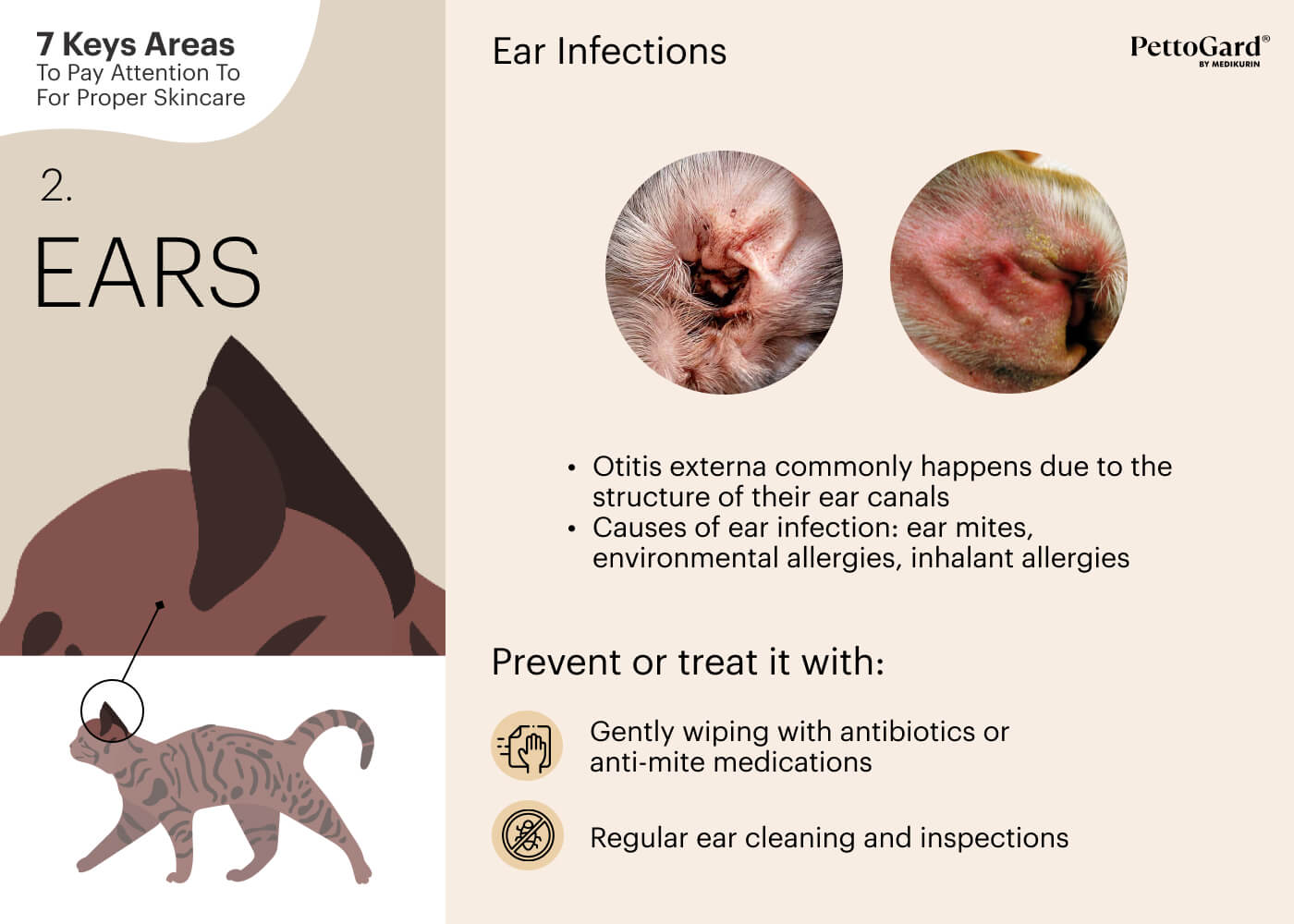
3. Abdomen
Not only does your pet’s abdomen have less fur, but they are also more exposed to dirty surface areas compared to the rest of their body. This often leads to skin rashes; although rashes can occur on any part of your pet’s body, they are particularly common in the belly or abdomen area of dogs and cats.
Abdomen rashes in dogs and cats will appear as tiny red bumps or spots on the skin, and the rashes are usually caused by contact dermatitis, insect bites, or allergies. Left untreated, your pets will scratch and bite their infected area to relieve themselves from the itch – and this leads to scarring and eventually bacterial infections. Thus, it’s important to identify the underlying cause of the rash. As for the symptoms, use a gentle, pH-balanced medicated pet shampoo to provide relief for your beloved pets. After that, remember to keep the affected area dry, clean, and away from irritants.
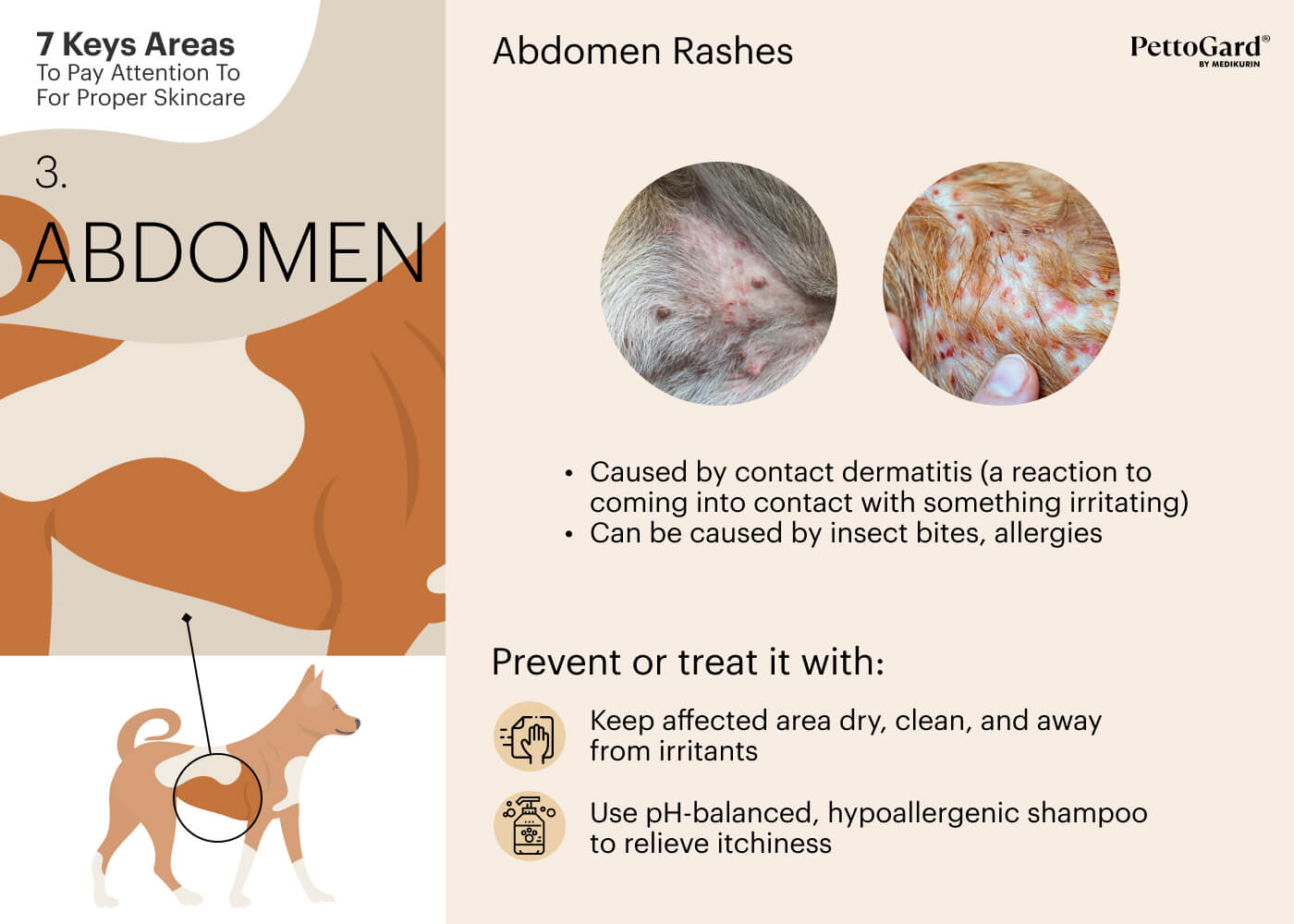
4. Neck
If your pet wears a collar, or has skinfolds due to breed type or weight issues, proper neck hygiene is paramount to ensuring their health. Not only is there a possibility of your pet being allergic to the material of the collar, but prolonged use of unwashed collars and skinfolds makes the perfect breeding ground for bacteria to thrive. This leads to itchiness, scratching, and chafing – which is an abrasion caused by repeated contact with an irritant. While the removal of your pet’s collar alone is not enough to reduce your fur baby’s discomfort, rest assured that there are disinfectant sprays for cats and dogs that are easily available in pet shops and they are usually quite effective. For double reassurance, use a hypoallergenic shampoo for pets to soothe their irritation or itchiness.
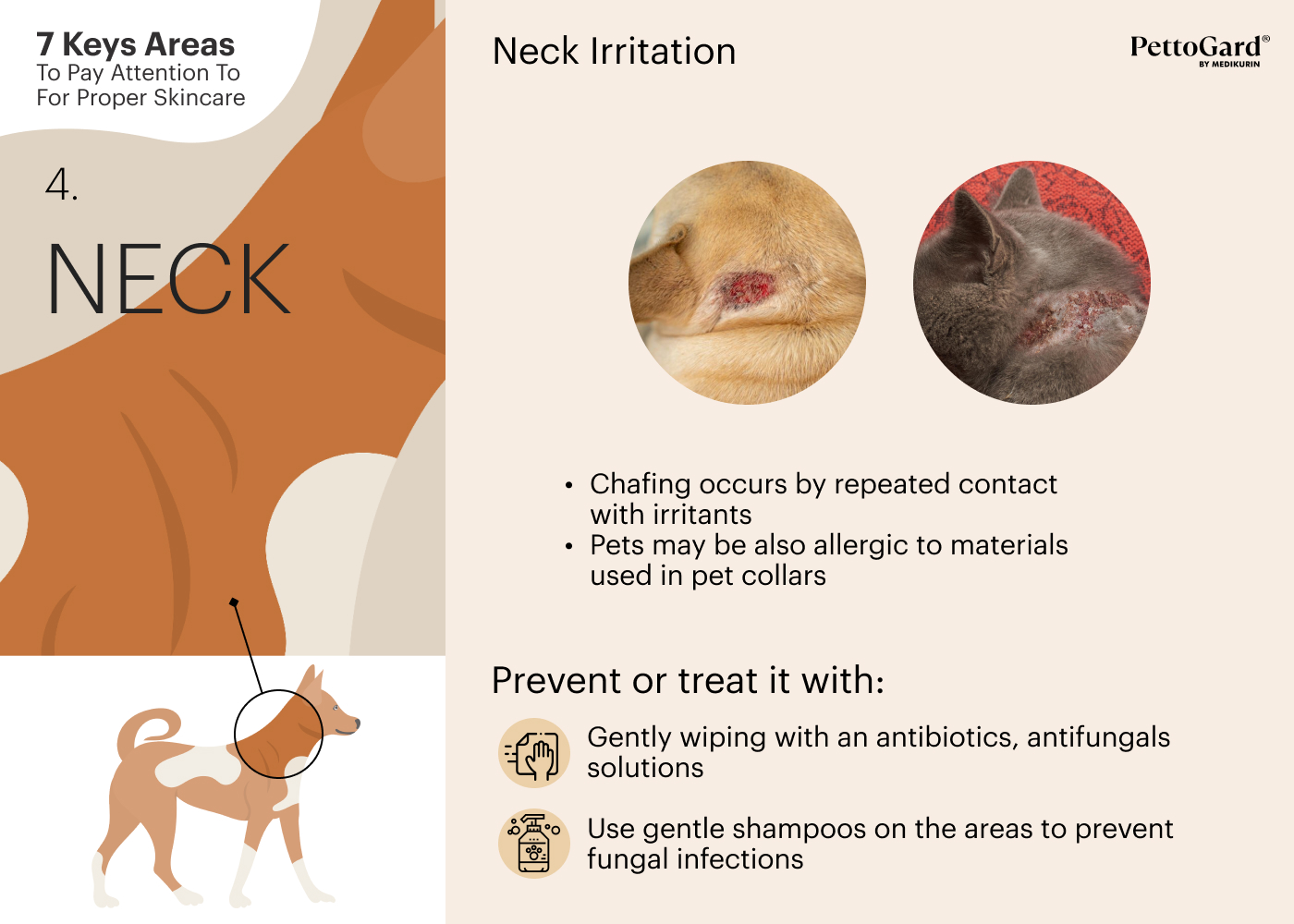
5. Limbs and Paws
Is your pet licking or nibbling on their paws a lot? Watch out, it could be pododermatitis – a common skin condition that causes itchiness on pet paws! To identify symptoms of inflammation, look for redness and swelling on your pet’s paws, especially if they are outdoor cats and dogs who spend significant time exploring nature or areas outside of the home. Pododermatitis can be caused by fleas, ticks, other parasites, yeast infections, and occasionally food allergies. To keep pododermatitis at bay, regularly clean your pet’s paws by wiping their paw pads and in between their toes, or sanitize them with a cleaning spray designed for pets. Another area of your pet’s limbs you should pay attention to when wiping clean is its elbow, especially if your pet is large and likes to rest on its elbow.
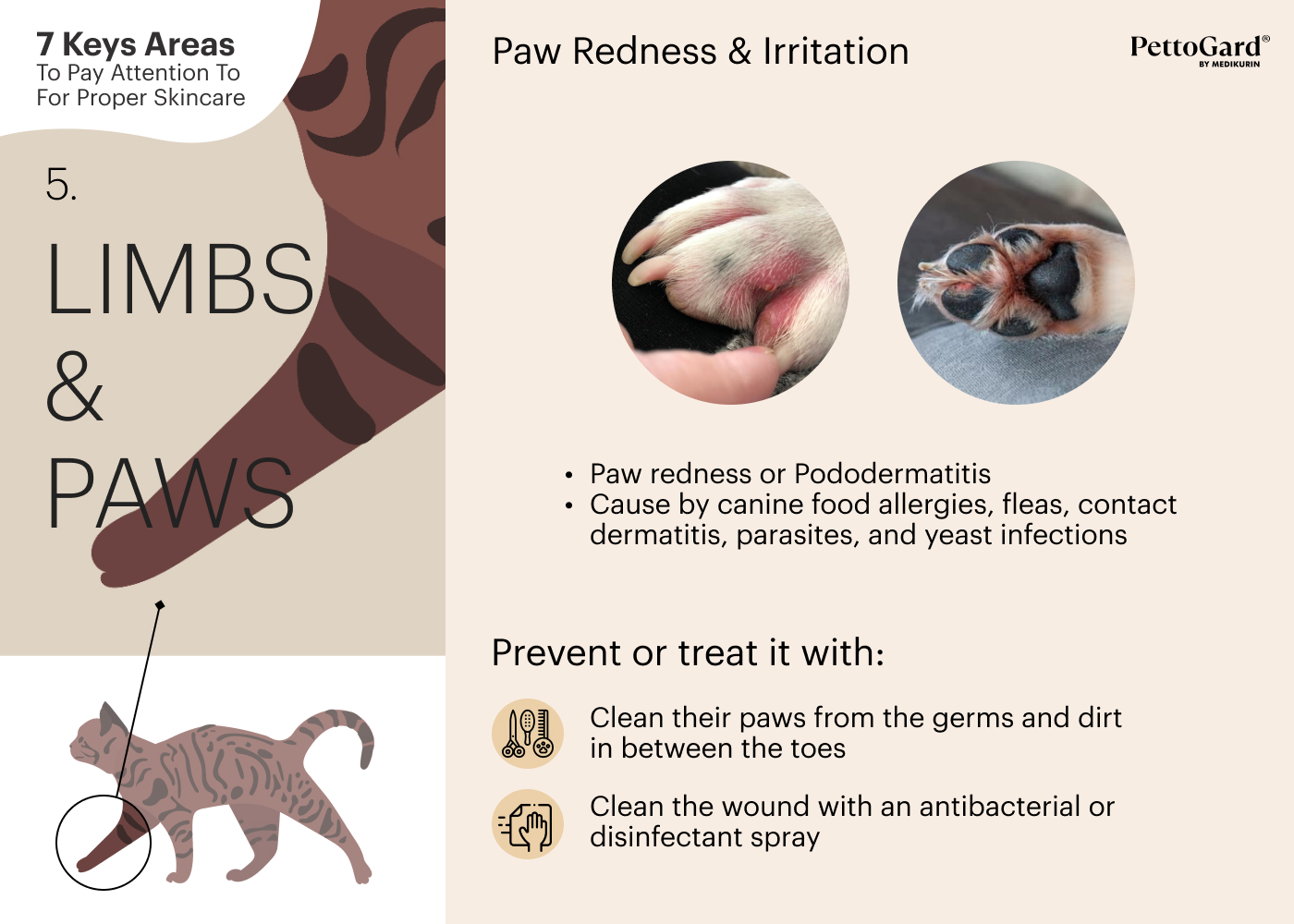
6. Armpits
Commonly seen in dogs, but rarely cats, the skin condition pyoderma causes pimple-like rashes in your pet’s armpit area. PyodermaIf can happen to any dog or cat regardless of breed, size, and age, and is caused by Staphylococcus bacteria that induce skin redness, itching, fur loss, bumps, pustules, and spots, especially in skin folds. To relieve your pets from these uncomfortable symptoms and cure them of pyoderma, pet owners are often advised to treat pets with antibacterial treatments and medicated baths approved by your veterinarian. These treatments and baths aim to kill the Staphylococcus bacteria and other problematic ones too, as well as provide a much-needed relief for your beloved furry family members.
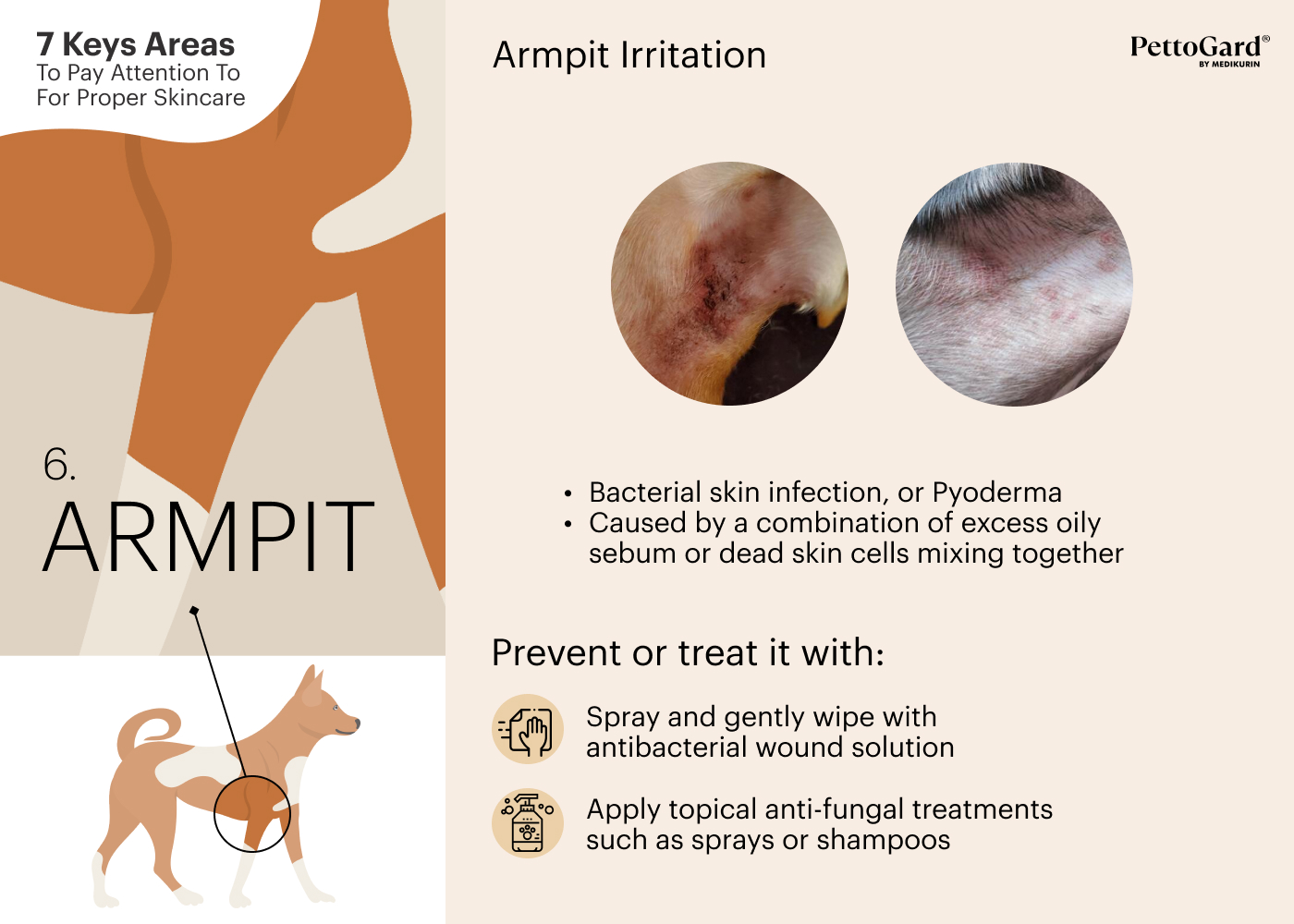
7. Anal Region
The anus is where feces exits your pet’s body, and thus is connected to the internal digestive system of your beloved pet. Thus, the importance of maintaining the cleanliness of your pet’s anal region cannot be further understated. Keeping your pet’s anal region clean can prevent the anal glands from being clogged and infected, which is painful and uncomfortable for your pet. In fact, there is a term for such a condition and it is known as anal sac disease, which can cause redness and swelling near the rear end. Pets with anal sac disease find it painful to sit or move around comfortably. If left untreated, the condition can progress and become chronic. Fortunately, anal sac disease can be easily treated at home by using an antiseptic solution to wipe gently and applying a wound spray for pets. Your pet’s anal region is one of the indicators for its overall health, so pay close attention to it and always seek veterinary care if you notice any signs of discomfort or inflammation.
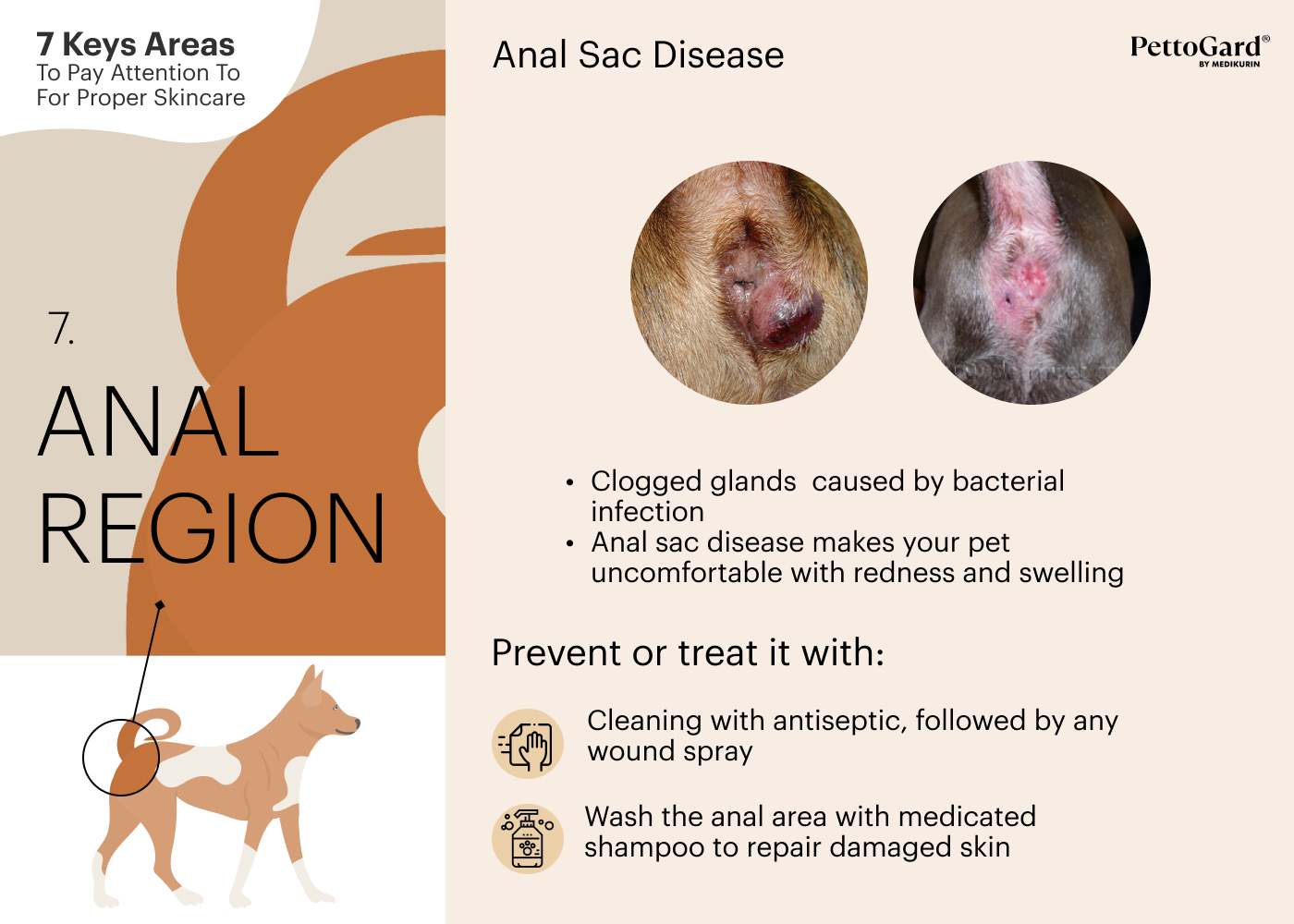
“Whew, that sounds like a lot to take in! Now, where do I even begin?”
No worries, really. While there isn’t a one-size-fits-all solution when it comes to pet health due to the extensive difference from one breed to another, it is universally agreed that prevention is better than cure. And that starts with choosing the right formula that ensures a clean and healthy coat for your pets.
For a start, instead of constantly switching between shelf-brand pet shampoos and putting your pet at risk of allergies, use PettoGard® Hypoallergenic Foam Shampoo for Dogs & Cats. Just as important as taking care of your pet’s diet and nutrition, it is necessary to ensure that their skin and coat get as much attention as well. Begin your pet’s weekly baths with PettoGard® Foam Shampoo, a medicated shampoo formulated to be gentle on dogs and cats, yet effective for achieving healthy skin and shiny coats.
Then, use PettoGard® Antimicrobial Skin Care & Wound Spray daily to keep areas sanitized and heal broken skin to prevent infections. PettoGard® Antimicrobial Skin Care & Wound Spray is not just great for when your pet is wounded, but also suitable for daily use as a prevention measure against skin problems. It is non-toxic and highly effective in killing harmful bacteria and keeping fungal infections at bay.
Additionally, you can keep your pet’s living spaces, food bowls, and bedding clean and deodorized with PettoGard® Odor Remover Spray for a happier home.
Conclusion
In conclusion, taking care of your pet’s skin and coat is an essential part of their overall health and well-being. Using high-quality products like PettoGard® Flea & Ticks Foam Shampoo, PettoGard® Hypoallergenic Foam Shampoo, PettoGard® Antimicrobial Skin Care & Wound Spray For Cats & For Dogs is proven to effectively prevent and treat common skin issues in pets. However, bear in mind that every pet’s skin is unique, and some conditions require the professional and medical attention of a certified veterinarian.
All in all, always keep a close eye on your pet’s appearance and behavior and don’t hesitate to seek professional help if you notice any unusual symptoms. With a little more love and care, you can help your furry family member maintain healthier skin and happier life for many years to come.
